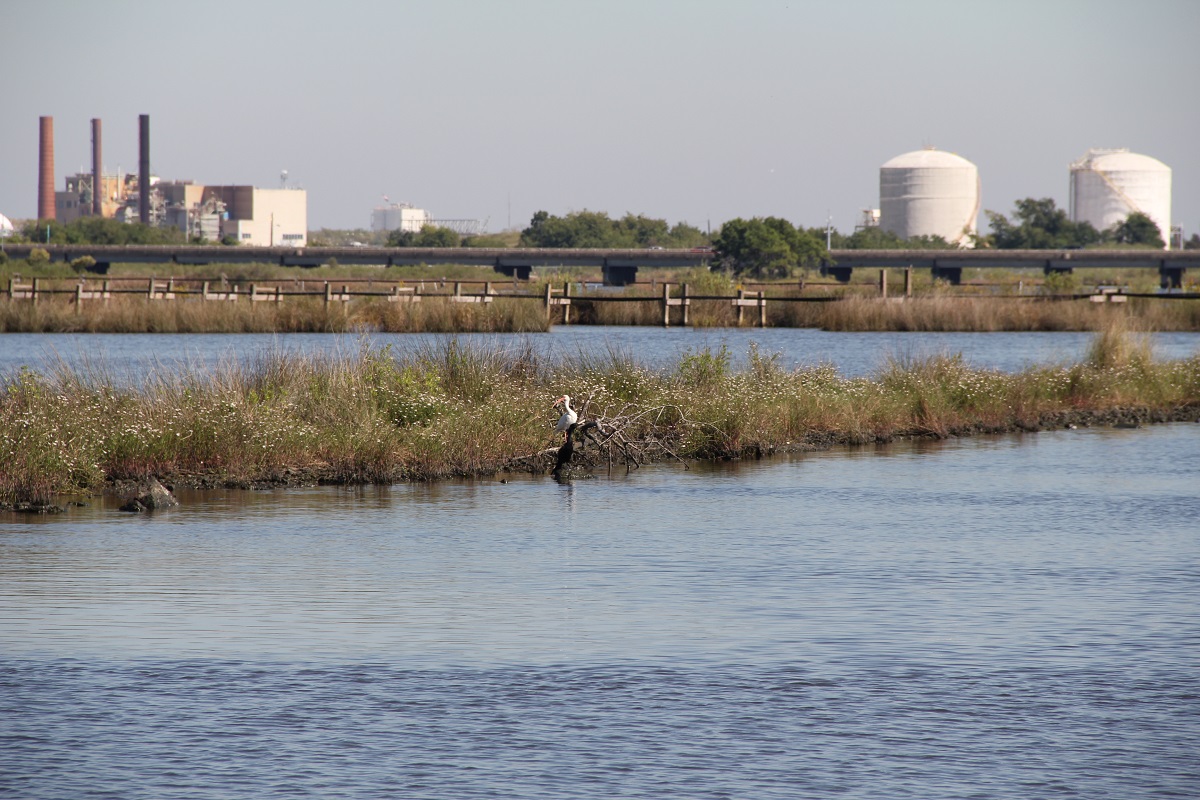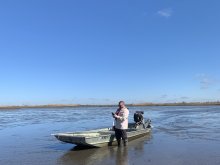Bayou d'Inde Draft Restoration Plan/Environmental Assessment Available for Public Comment
June 20, 2023
The Trustees of the Bayou d’Inde hazardous waste site published a Draft Restoration Plan/Environmental Assessment (RP/EA) (PDF, 54 pages) that describes injuries to natural resources attributed to hazardous substances released into the environment and proposes certain restoration projects.
The banks of western Louisiana’s Bayou d’Inde have been industrialized since oil and natural gas deposits were discovered nearby in the 1920s. Chemical manufacturing and petroleum refining facilities have released toxins—including PCBs, dioxins, lead, and mercury—into the bayou and surrounding areas for decades.
Natural resource injuries resulting from the contaminated water were found in:
- Surface water and sediment
- Groundwater
- Soils
- Bottom-dwelling invertebrates, fish, birds, and mammals
- Recreational resources
- Impacts to local anglers
In October 2018, the Trustees and a few potentially responsible parties, which include CITGO Petroleum Corporation, Occidental Chemical Corporation/OXY USA Inc., and PPG Industries, Inc., completed a settlement to address injuries from toxic waste releases into Bayou d’Inde. Per this settlement, the companies provided $7,954,954 to fund natural resource restoration actions.
The Trustees include Louisiana Department of Environmental Quality (LDEQ), Louisiana Department of Wildlife and Fisheries (LDWF), National Oceanic and Atmospheric Administration (NOAA), and the United States Fish and Wildlife Service (USFWS) acting on behalf of the U.S. Department of the Interior (DOI).
Restoration Overview
The objective of the restoration process is to restore, rehabilitate, replace, or acquire the equivalent of natural resources and/or services lost due to the release of hazardous waste. The Draft RP/EA identifies preferred restoration actions to address these losses in Bayou d’Inde.
As part of this Draft RP/EA, the Trustees propose the following restoration projects:
-
The Sabine National Wildlife Refuge marsh terracing: This project would benefit bottom-dwelling (benthic) organisms, fish, birds, and other wildlife species by enhancing approximately 760 acres of coastal marsh habitat. This would be done by constructing approximately 128,500 linear feet of earthen marsh terraces within Trapper Shack Lake and Rita Lake in Sabine National Wildlife Refuge in southern Cameron Parish, approximately 24 miles south of Lake Charles, Louisiana.
-
Mitigation bank acreage purchase: This alternative proposes to purchase 30-40 acres of bottomland hardwood forest, coastal prairie, and fresh-intermediate marsh habitats within the South Fork Coastal Mitigation Bank, to compensate for injuries to vegetated wetland and riverbank habitats at the site.
- Recreational fishing opportunities: The Trustees propose using settlement funds to compensate for lost recreational fishing opportunities by creating or enhancing infrastructure, access, and use opportunities. While the Trustees have not yet identified a specific restoration project to address this injury, there is active discussion happening on potential opportunities with communities and local and State entities throughout the affected area. The Trustees will give notice and an opportunity for public comment when a suitable project or projects are identified.
Public Comment
The Trustee Council is accepting comments on the Draft RP/EA (PDF, 54 pages) for a 30-day comment period open through July 21, 2023. Please send your written comments on the draft plan no later than July 21, 2023.
Submit comments:
-
By email to: john.barco@noaa.gov
-
By mail to:
John Barco
NOAA Restoration Center
263 13th Ave. South
St. Petersburg, FL 33701







